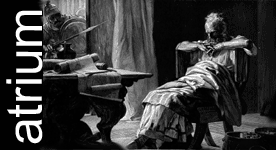From the Littlehampton Gazette:
A short video accompanies the original article (not firefox friendly, alas ... use the IE Tab addon)
A 2,000-year-old body has been uncovered in North Bersted.
The rare find has excited archaeologists who have labelled the discovery as being of international importance.
The skeleton is believed to have been a warrior who died around the time of the Roman invasion of England in AD43. He is likely to have been a prince or rich person of some status because of the quantity and quality of goods found with his remains.
Dr Steve Ford, a director of Thames Valley Archaeological Services, said the site had yielded isecrets beyond compare anywhere in this country.
Of particular interest were two highly decorated bronze latticework sheets. These were probably used to cover a shield.
"There is no comparision for this metalwork that we know of," said Dr Fox. "It might well be unique. It's a very intricate piece of work for its time.
"Professor Barry Cunliffe, the professor of European archaelogy at Oxford University, visited the site when he was in Chichester and said he knew of nothing like this metalwork.
"The provisional date of the burial from the associated pottery indicates that it took place either at the end of the Late Iron Age or just into the Roman period, perhaps around 40-60AD.
"The Iron Age people of this age were in essence pro-Roman and the Emperor Claudius launched an invasion, initially, to restore the local king Verica to his throne. The deceased may have been one of the local ruling caste, proud to be buried with his Roman goods."
The grave of the oldest body ever found around the Bognor Regis area was unearthed by archaeologists who have been given time to explore what lies underneath the surface of farmland before it is covered by housing.
Allowing the dig is a condition of the planning permission granted by Arun District Council to the developers, Berkeley Homes and Persimmon Homes, before they use the land for 650 homes and part of the Bognor northern relief road.
The requirements of the dig have been set out by the county council's archaeologist, Mark Taylor. The digging has been based north of North Bersted Street. The discovery of the grave was made a few weeks ago but it has been kept underwraps until now to allow the valuable metalwork and the body to be removed to safety for detailed examination and away from the unwanted attention of illegal prospectors.
Digging has been going on for several months. Dr Ford said the isolated burial was the main point of interest of the work. It was found just 40cms, or 16ins, below the surface.
"The deceased, a mature male more than 30 years old, was laid out in a grave and was accompanied by grave goods.
"These comprised three large pottery jars placed at the end of the grave, presumably containing offerings to the gods or food for the journey into the afterlife, an iron knife and several items made of bronze.
"One appears to be a helmet and the other a shield boss. Also present are two latticework sheets highly decorated, perhaps used to cover a shield.
"The burial and its grave goods seems to have been placed in a large coffin or casket bound by iron hoops with an iron-framed structure place on top," he explained.
The bronze objects have been lifted in blocks of soil by a specialist conservator for careful examination and conservation in a laboratory before they are studied in detail.
The North Bersted burial shared similarities with famous graves of the Late Iron Age in places such as Welwyn Garden City, St Albans and Colchester. All of them were graves of princes or chiefs, or possibly priests, he added.
Also revealed in the excavations were revealed Bronze Age boundary ditches and occupation, a small hoard of four Middle Bronze Age bronze axes, or palstaves, an Iron Age roundhouse and a Roman building set among fields.
The area would have been used for farming all those centuries ago.
Local historian Sylvia Olliver, who lives in North Bersted, said: "I am not surprised they have made such an important find. This area is absolutely full of items from the past. You just don't know what is underneath your feet."
This was reflected by the Stoneage Close and Bronze Close road names close to her home. The ground was being explored when she moved in about 34 years ago.
Just three years ago, the Observer reported on the likelihood of the land north of North Bersted Street being occupied as far back as 4000BC during the Neolithic era.
A short video accompanies the original article (not firefox friendly, alas ... use the IE Tab addon)
